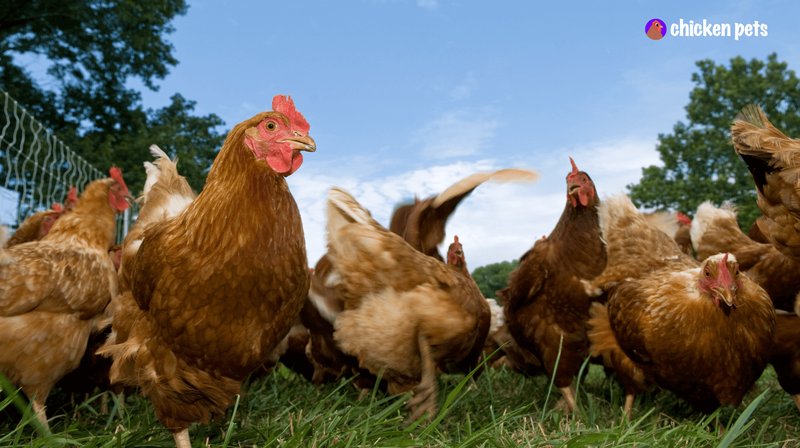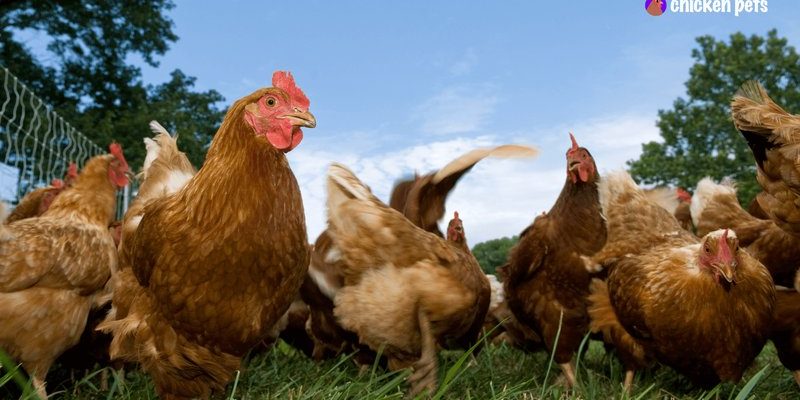
Let me paint a picture for you: Imagine a lively neighborhood where everyone has their roles. Some are leaders, some are followers, and everyone has a unique way of expressing themselves. That’s the reality in a flock of chickens. Understanding their pecking order, moments of broodiness, and various vocalizations can enhance your relationship with these animals and improve their well-being. So, grab a cup of coffee, and let’s explore the fascinating world of chicken behavior!
Understanding Pecking Order
The term pecking order might make you think of a strict hierarchy, and that’s exactly what it is in the chicken world! It’s the social structure that determines which chickens get the first pick of food, the best spots for dust bathing, and so on. The highest-ranking chicken, usually the rooster or the dominant hen, enjoys priority. When there’s a new chicken introduced to the flock, tensions can run high as they navigate this pecking order.
It’s not just a free-for-all, though. Chickens will establish their roles through a series of interactions like chasing, pecking, and sometimes even fighting. They communicate with body language and specific sounds. A gentle cluck can mean “I’m friendly,” while a sharp squawk might signal alarm or aggression. Over time, chickens settle into their roles, and the pecking order stabilizes.
Now, you might wonder why this is important. A well-established pecking order helps reduce stress among the flock. Chickens know their place, which leads to smoother interactions. If you’re introducing new birds, be prepared for some chaos as they figure out their pecking order all over again.
Recognizing Broodiness
Have you ever seen a hen sit on a bunch of eggs and wonder what’s going on? That’s broodiness in action! A broody hen is like a mom on a mission, determined to hatch those eggs. This behavior can start when the hen feels an instinctual urge to nurture. She’ll become protective, often puffing up her feathers and clucking to scare off any intruders.
Broodiness isn’t just about sitting on eggs, though. It’s a state of mind that can affect her behavior in significant ways. A broody hen might stop laying eggs, leaving others in the flock to pick up the slack. This can shift the dynamics of the pecking order as other hens step in to fill the void.
If you’re thinking about managing a flock, it’s essential to recognize and deal with broodiness. You might provide a nesting box for her, or if that’s not desirable, gently encourage her to break the habit by removing her from the nest. Remember, it’s all about balancing her needs with those of the flock.
The Language of Chickens: Vocalizations
Chickens have a surprisingly wide range of vocalizations they use to communicate. Each cluck, cackle, and squawk carries a specific meaning. For example, when a hen lays an egg, she often gives a loud cackle—almost like a proud announcement! It’s her way of sharing her accomplishment with the flock.
You might also hear soft clucks when hens are foraging together. This gentle sound is their way of staying connected, making sure everyone’s in sync during their search for treats. On the flip side, sharp, loud noises can indicate distress or danger, prompting the flock to react quickly. Think of it as their version of a smoke alarm!
Understanding these sounds can deepen your bond with your chickens. If you know when they’re happy, content, or in distress, you can respond accordingly. It’s like having a conversation with them, guiding how you care for and interact with your feathered friends.
Social Interactions and Friendships
Chickens aren’t just solitary birds; they form friendships and bonds within their flock. You might notice that certain hens stick closer together. These bonds can provide comfort, security, and a sense of belonging. Just like in any social group, some chickens will be more outgoing and social, while others prefer to keep to themselves.
One interesting aspect of chicken behavior is that they can distinguish between familiar and unfamiliar chickens. They may recognize their flock members and react differently when they encounter new ones. Acceptance of newcomers can take time as they integrate into the established pecking order.
If you’re introducing new birds, it’s wise to do so slowly. Allow them to see each other through a fence first for a few days, creating a low-stress environment. Once they’re comfortable, you can let them mix under supervision. This gradual introduction can help minimize fighting and stress, leading to a happier flock.
The Impact of Environment on Behavior
The environment chickens live in plays a significant role in their behavior. A spacious coop with areas for dust bathing, foraging, and roosting can help reduce stress and improve their overall well-being. Think of your chicken coop like a cozy home. If it’s cluttered or uncomfortable, it can lead to squabbles and unhappiness.
Additionally, providing enrichment is key. Chickens love to peck and scratch around, so scatter some grains for them to hunt or hang up a cabbage for them to peck at. This not only keeps them entertained but also allows them to express natural behaviors, leading to a healthier and happier flock.
If you notice increased aggression or stress, assess their living conditions. Are they cramped? Are the resources (like food and water) easily accessible? Making adjustments can make a world of difference in how your chickens behave.
Understanding chicken behavior—like the pecking order, moments of broodiness, and vocalizations—can enhance your experience as a chicken keeper. By taking the time to observe and learn, you’ll foster a healthier, happier flock that thrives in a well-established social structure.
Whether you’re a seasoned farmer or a curious friend, knowing these intricacies allows for better care and companionship with your feathered friends. So, keep watching, listening, and engaging with your chickens. You’ll discover that there’s always more to learn about their fascinating lives. Embrace the adventure, and watch your backyard flock flourish!

